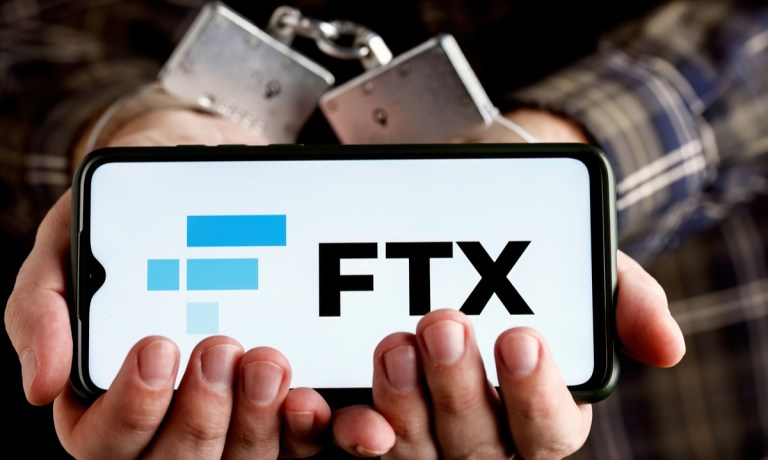
It is the first day of the rest of FTX co-founder Sam Bankman-Fried’s life.
And he even looks a little different.
The one-time paper billionaire and crypto entrepreneur showed up to the first day of his criminal trial on Tuesday (Oct. 3) sporting a clean new haircut reportedly given to him by a fellow inmate at the Metropolitan Detention Center in Brooklyn, New York.
When he was wooing billionaire investors and millionaire celebrities, along with much of the world’s retail investing public a little more than a year ago, Bankman-Fried was well-known for wearing T-shirts, cargo shorts, and sporting an infamously unkempt and bushy hairdo.
In court, his lawyers made sure he wore a fresh suit.
He is facing seven criminal counts of fraud and conspiracy, and stands accused of another five more which he will face in March 2024, all related to his actions at the helm of a sprawling crypto empire centered by the now-insolvent FTX cryptocurrency exchange.
Bankman-Fried and his colleagues made a series of bad bets, and personal splurges, with money they are accused of illegally misappropriating from FTX’s customers. The bad bets ran up billions in losses, and the splurges — like $240 million in luxury real estate — aren’t the best look in retrospect, given that none of the collapsed company’s creditors may ever be made whole.
FTX was in business for around 3½ years and reached a peak valuation north of $30 billion. It went bankrupt in just five days.
Soon, those colleagues will testify against Bankman-Fried after pleading guilty to their own charges and agreeing to cooperate with federal prosecutors. The 31-year-old former crypto founder and quantitative trader alone has maintained his innocence.
Read also: From Crypto Fame to Courtroom Shame: Bankman-Fried’s Rise, Fall, and Reckoning
In court Tuesday, a list of witness compiled jointly by both the defense and the prosecution was read out by Danielle Sassoon, assistant U.S. attorney for the Southern District of New York.
The witnesses include several former FTX Group employees, chief among them Caroline Ellison, Alameda’s ex-CEO, as well as Gary Wang, FTX co-founder; Nishad Singh, FTXs former engineering head; Ryne Miller, the FTX US general counsel; Daniel Friedberg, FTX’s former chief regulatory officer; Constance Wang, the COO of FTX and co-CEO of FTX Digital Markets. Sam Trabucco, the ex-CEO of Alameda Research who handed off the reins to Ellison and has stayed relatively under the radar since, may also be called as a witness.
Many of the witnesses have agreed to plea deals with the government for their cooperation.
Other witnesses include FTX investors and business affiliates such as Anthony Scaramucci, founder of SkyBridge Capital; Zac Prince, CEO of the bankrupt crypto company BlockFi; Sequoia Capital investor Alfred Lin; and Paradigm co-founder Matt Huang.
Bankman-Fried’s parents, Allan Joseph Bankman and Barbara Fried, as well as his brother Gabe, will also testify.
Among the other entities whose representatives may be called to the witness stand include organizations hurt by FTX’s collapse as well as those he funded.
The Ontario Teachers Pension Fund, Genesis, Lightspeed Venture Partners, Silvergate Bank, Signature Bank, Binance, Celsius, and Voyager Digital were all listed, as was Guarding Against Pandemics, the advocacy group run by Gabe Bankman-Fried.
It remains unclear whether Bankman-Fried himself will testify in his defense.
Read also: Sam Bankman-Fried, FTX and the Demise of the Cool Kids
The criminal trial itself kicked off at 9:30 a.m. at a Lower Manhattan federal court with voir dire questioning about the various qualifications of the potential jurors by Judge Lewis Kaplan.
The voir dire questioning did not begin until 11, and by the end of the day the jury had still not been filled.
Of the 50 qualified jurors selected from the larger group, there still need to be 18 selected: a dozen jurors, and half-a-dozen alternates.
“With luck and a strong wind at our back we may finish today. … If not, tomorrow morning,” Kaplan told the court.
Bankman-Fried’s trial is expected to last into early November, and many of the potential jurors claimed scheduling conflicts that would prevent them from serving on the jury.
Kaplan allowed one potential juror to recuse herself because her own wedding was upcoming, but did not dismiss another whose husband’s co-worker was getting married during the trial.